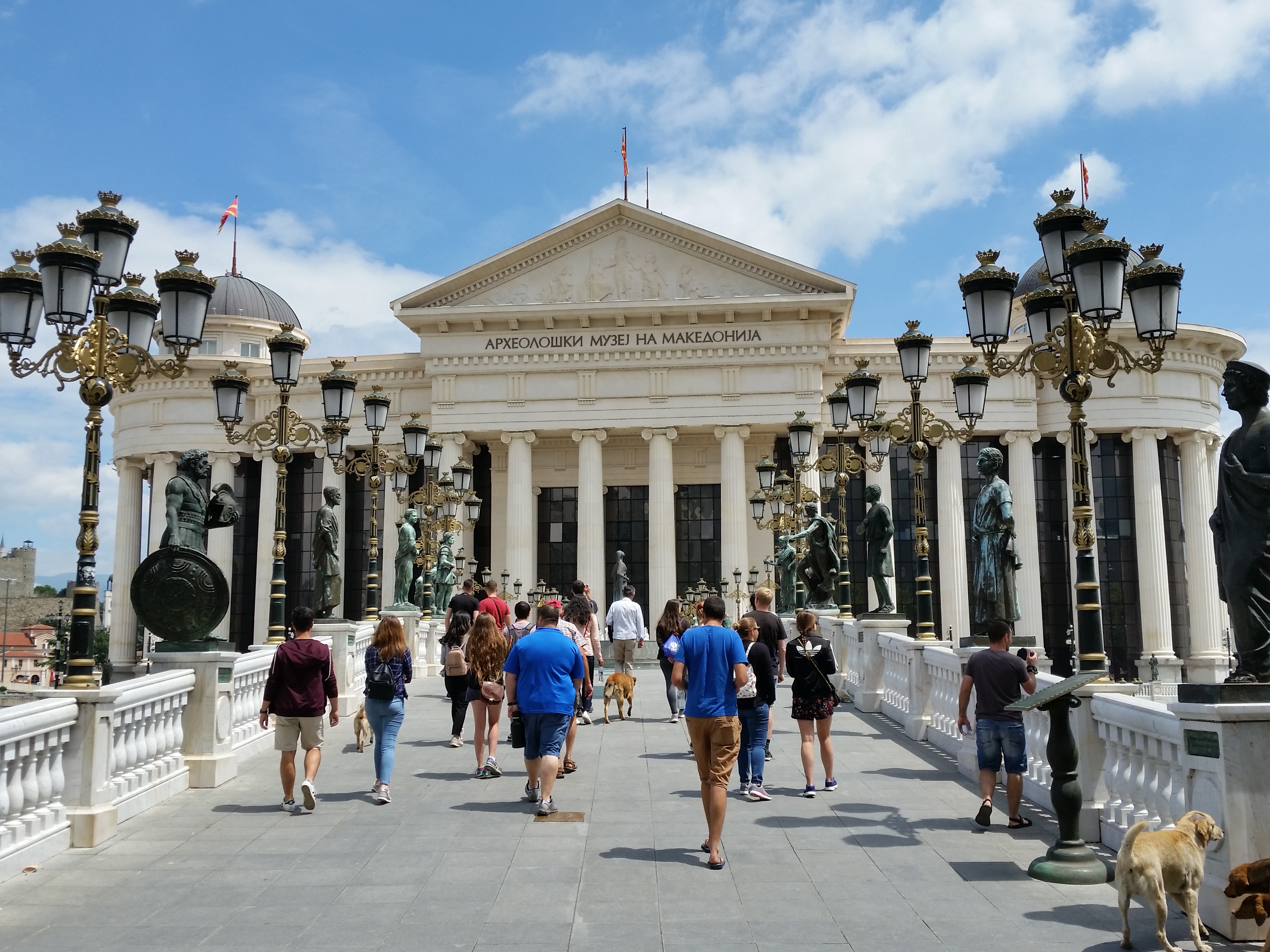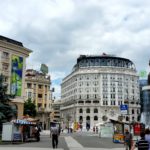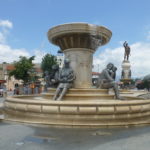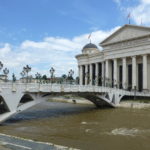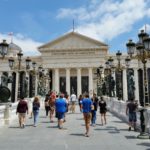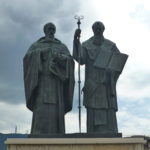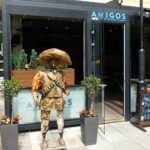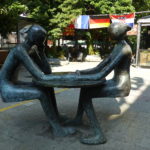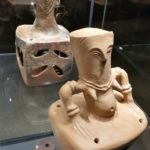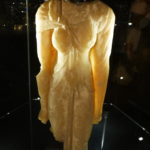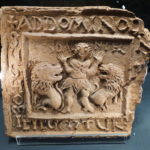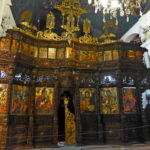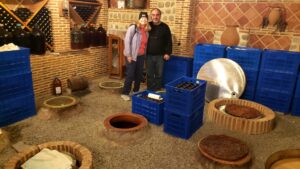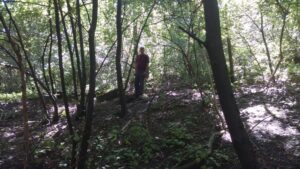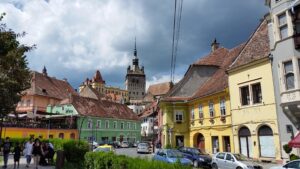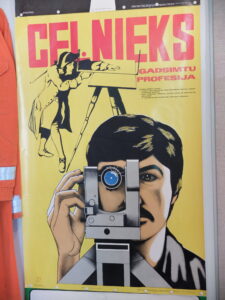A walk about central Skopje delivers it all. The Great, of course, is Alexander of Macedon, who conquered the western world nearly 2500 years ago and is celebrated here with a huge equestrian statue.
What we don’t hear is that Alexander’s Macedon was over in Greece, though who knows where the borders were at that point. Today, the distinction is still a sore one as Greece has blocked Macedonia’s admission to the EU unless the country changes its name. In 2018, the voters could have chosen Northern Macedonia, but were so irritated that they rejected a renaming altogether. By 2019, the issue seemed to have been settled at last: it’s North Macedonia.
There seemed to be a special irony in the earlier rejection of the name, as the country has seen a lot of shifting in control and in name. The pedestrian street named Macedonia, for example, encapsulates a troubled 20th century for the country. Here, we were told, an invalid lived for decades in the same apartment, but her address kept changing. The street name when Serbia first controlled the country switched under Bulgarian rule in WW2. Tito’s Yugoslavia yielded Marshall Tito street, and the independent Republic – even then at odds with Greece – created Macedonia Street. Will it become North Macedonia Street now?
At the end of the street opposite Alexander’s statue is the old central rail station, hollowed out by the devastating 1963 earthquake that toppled 85% of Skopje’s buildings. Skopje needed to rebuilt.
The good is a bit less controversial – the Catholic saint, Mother Teresa. The location of the house where she was born is near the site of the humongous Alexander the Great statue, and marked with a plaque. She was baptized nearby on Macedonia Street, where a modern church now sits. Plus, she was educated in Skopje, though she largely served elsewhere. When we were in Albania, that country claimed her as a native daughter due to her heritage or some such reason. You can even follow in her path, so to speak, by driving the tolled motorways named for her.
Nonetheless, today Catholics are few in number. You are more likely to hear the old modal singing of Eastern Orthodox churches in Skopje, or the call to prayer from any of the mosques that still serve 30% of the population.
The grandiose includes the city’s recent public works projects on ground flattened by the earthquake, imitating Parisian or Viennese imperial scale and style – despite centuries of subjugation. Nor was it enough to honor Alexander with a statue. The fountain in tribute to Alexander’s mother offers no less than four images of her in different stages of nurturing. Philip II, his father, waves from a pedestal nearby. Hundreds of subsequent Macedonians deemed even a bit noteworthy have merited statues as well.
The epitome of this statuary craze is the broad bridge, “Civilizations in Macedonia,” – as well as the adjacent bridge, the “Art Bridge – both packed with images of great and near-great Macedonians. Neighboring palatial buildings are crowned with even more statues.
Yet it’s an impressive view from one end of the Civilizations bridge, with the old-looking but newly built, neo-classical Museum of Archaeology,
And then there’s the triumphal arch near Alexander, one with no military triumph to celebrate. Instead, it honors learning and the old universities of Macedonia, especially the medieval monks Cyril and Methodius.
These two saints – yes, they have statues in town – developed the Cyrillic alphabet for the Eastern Orthodox church (though sadly Methodius lost top billing on the name) and used it to translate the Bible into the vernacular language.
Aside from the good, great and grandiose, walking around Skopje can be entertaining because of other miscellaneous statuary often imitative of other places. In financial centers around the world, the bull is a common symbol. Skopje’s sits outside a shoe store, where bulls supply some of the materials.
And then there’s the fashionista walking along the street so attentive to some unknown caller.
And the very stereotypical figure of a bandito outside a restaurant offering Mexican food. We figured we might just try this culinary home away from home, despite the caricature…but left anyway when they said they had no beans or salsa.
We also found some fine art amid the kitsch, like a seated couple whose relationship seemed more and more mysterious as we looked upon it. It was a surprisingly emotional work of street art among so many grandstanding public works.
Back at the Museum of Archeology, we found somewhat older art, in a superb collection dating back 7500 years, presented in the dramatic fashion you come to expect in Skopje. Some of our favorites:
— Neolithic ceramic altars, about 7500 years old.
— Rare glassware from the 1st to 3rd century AD. The fragility of glass means that objects rarely survive intact. These were splendid.
— An elegant alabaster statue of Isis from the Macedonian empire after Alexander the Great, nearly 2500 years ago.
— A charming terracotta icon from 5th to 6th century AD.
And nearby on the narrow lanes of the old town was this masterpiece in wood, an incredibly elaborate 16th century iconostasis (or altar screen) carved in walnut for an Ottoman era church, Skopje.
The building had to be constructed a bit below street grade in order to comply with Ottoman restrictions on the visibility of Christian churches, though all religious practice was tolerated.
Not only Alexander turned out to be great, but a whole lot more in Skopje, as the Museum and church showed us.
(Also, for more pictures from Macedonia, CLICK HERE to view the slideshow at the end of the itinerary page.)


